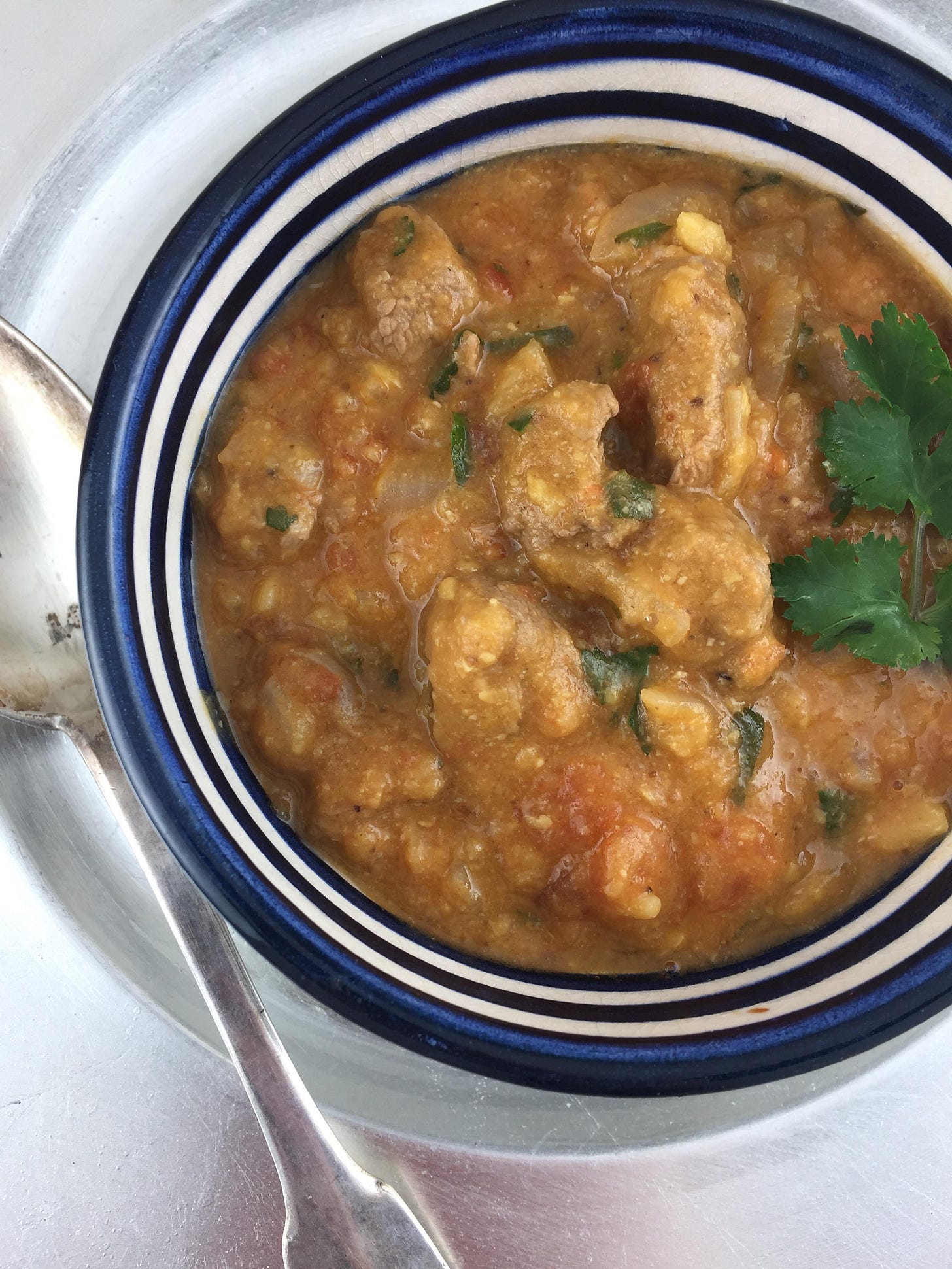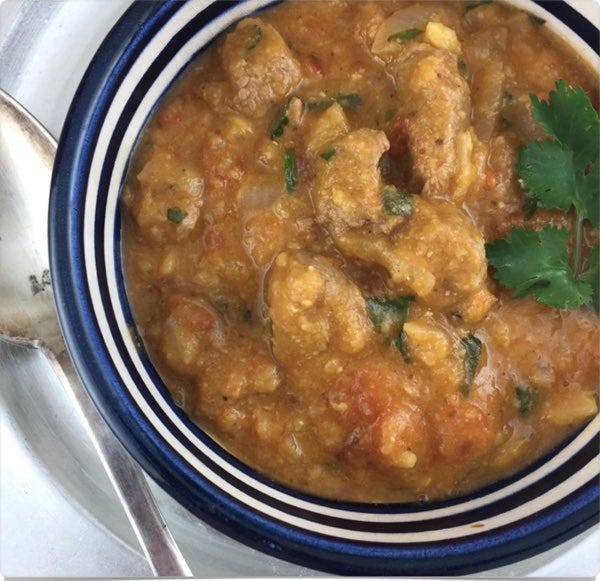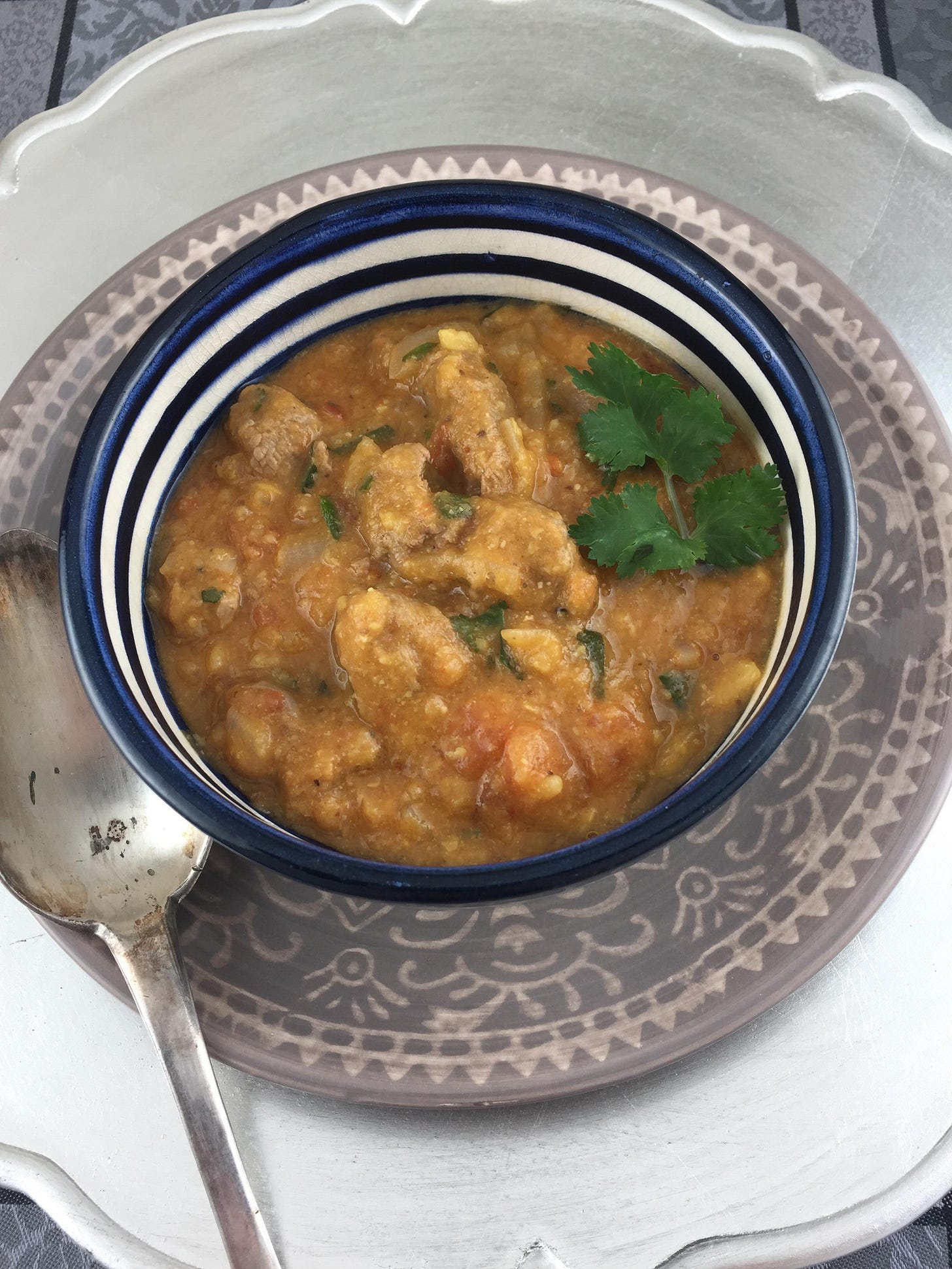“They did not, however, omit to visit his niece and housekeeper, and charge them to be careful to treat him with attention, and give him comforting things to eat, and such as were good for the heart and the brain, whence, it was plain to see, all his misfortune proceeded.”
- Don Quixote, Miguel de Cervantes (translation John Ormsby, 1997)
In September 2009, I hurriedly flew to Florida to join my family to bury my older brother. I arrived late at night; the funeral was scheduled for the following morning. Even though we had expected his death, it was still impossible to process; we were all in a deep state of shock and grief. We felt lost, abandoned, helpless, and distraught. After the funeral, we returned to our mother's house, where we found the kitchen table covered with deli platters, casseroles, and baked goods— food brought in by friends and neighbors for the mourning family, as is tradition. We shared stories about Michael, laughed and cried, and made jokes—our way of dealing with pain. And we ate, the heavy food creating a sense of consolation. By late afternoon my sister, who had also flown in from out of town and would be staying with me and mom for a few days, suggested we go grocery shopping.
We entered the supermarket with the best of intentions, determined to stock up on healthy meals for the week. But it wasn’t what we really wanted, nor what we needed. As the fluorescent lights flickered overhead, something shifted, and as we wandered up and down the aisles, we found ourselves filling our cart with everything we craved — cookies, cakes, ice cream, frozen pizza, cream pies, potato chips, and pasta. By the time we pushed our cart to the checkout, we were laughing hysterically. The weight of our grief had been lifted, a brief and fragile reprieve, but it was exactly what we needed. We went home, ate the stuff of our childhood, and reminisced. For a moment in time, our regrets were softened and we were happy.
Good for the heart and brain… Cervantes is thought to have been the first to introduce the concept of comfort food in the pages of Don Quixote back in 1615. Comforting things to eat may have been a concept at the time, but it took the Spanish author to define and express it exactly. It didn’t seem to reappear on the printed page again until the 1960s—or at least so in the States—which makes me wonder what folks did in between during times of upheaval.
…whence, it was plain to see, all his misfortune proceeded.
We’re living in strange and complicated times. Even though most of us are familiar with grief-- the emotional tailspin of losing a friend or loved one, the misery of a relationship gone sour or the excruciating pain of divorce, the heartbreak of not getting a call back for a second interview, or the despair of the unexpected loss of a job or a home—what we are experiencing today is like nothing else.
In 2016, we added chaotic politics to our repertoire of worries, a politics of volatility and indiscriminate cruelty. The dark climate of a world gone wrong. We are now entering a new phase; the old doubled and tripled, unbuffered by reasonable voices, and we expect the worst. We have become desperate and angry in this overcharged and overheated political climate, and it’s eating away at us.
This is grief, and we all, individually and collectively, are experiencing various stages of grief at once: shock, denial, anger, bargaining, depression, and—sadly, and most worth battling back—acceptance. We are looking for ways of coping and surviving, but we also know that we have to fight back.
Everyone (from psychologists to political pundits to friends) is talking about self-care, urging us to take time out and away from the news to do things that give us pleasure — long walks, hot baths, binge-watching comedy shows, spending time with family and getting together with friends, focusing on our work and projects, spending more time making art, crafts, music. Every moment concentrating on something enjoyable and creative, things that make us laugh and feel good, is a moment that revives and strengthens us to return to action.
Gustave Garlin, 19th century French chef and author, defined the French verb se restaurer — the word restaurant comes from the verb restaurer — as “to take comfort, a meal or a drink, if the need arises” in his book Le Cuisinier Moderne, ou les Secrets de l’Art Culinaire. The verb restaurer, which is what one does when one dines in a restaurant or elsewhere, means “to restore strength by making people eat, by eating”.
Self-care is fine, and I’ve been doing more and more of it since the election, the long walks, the binge watching, baking, and throwing myself into my research and writing. It really does force me to turn off the outside world, the political situation in particular, and focus on something that brings me joy and satisfaction, or something that simply calms my explosive emotions. But I’m a food person and in moments of despair I find myself, like a lot of people, heading to the kitchen to eat. I have always found comfort in food, so much so that when someone I love is having a tough time, my reflex is to cook or bake for them. Ess ess, mein Kindt! Eat, eat, my child! I grew up in a Jewish home, one generation from the Old Country, and this Yiddish expression was the battle cry, the cure-all, the expression of love, of my mother and grandmother; every problem could be solved, every bad or angry mood soothed with food.
What exactly is comfort food? Or, perhaps I should ask: what makes food so comforting? It’s so personal; what is emotional medicine for one is not the same for another. Comfort foods are usually grounded in nostalgia; those familiar dishes shared with loved ones during moments of peace, calm, and happiness. They remind us of simpler times, filling us with a sense of safety, warmth, and security, as if we’re sheltered from life’s challenges, our own personal monsters and dragons. Even beyond the psychological effects of comfort food, studies have shown that consuming certain high-calorie, fatty, salty, or sugary foods triggers reward and pleasure systems in our brains, that much more reason to indulge. And in today’s world, with the turbulence surrounding this new administration, the White House filled with actual monsters and dragons, finding those moments of comfort seems more important than ever.
“To take comfort in a meal, if the need arises; to restore strength by eating.”
So find yours. As the political situation becomes darker and increasingly impossible to fathom, as our anger, grief, and fear surge, so does our need for comfort. More than need, it becomes a necessity. As Garlin wrote, eating offers a sense of comfort but restores our strength, as well, the strength to fight the brutes signing executive orders, creating chaos, sowing hatred, and stealing our rights. My own long walks and binge watching certainly help, but I spend more and more time in the kitchen, as do more and more of my friends, finding welcome respite—no matter how momentary—in a bowl of soup, a slice of cake or two, a really good stew. Although I have long expected the absolute worse from this incoming administration, his first 12 hours alone has me floored, terrifyingly, dizzyingly appalled. And honestly, even if you don’t think you’re a good cook or baker, even if you have minimal experience in the kitchen, never underestimate the satisfaction and relief, the pure emotional release that chopping vegetables, searing meat, stirring a pot of soup or stew, and kneading bread dough can give. Standing in a warm kitchen, breathing in the scents of baking cake or bread, the spiced fragrances of chili or pasta sauce…it’s all healing.
Auguste Escoffier, the great chef, restaurateur, and culinary writer, once wrote “Soup puts the heart at ease…(and) eliminates the tension of the day.” Comfort food is both personal and cultural, and since I’ve lived in Europe, the list of dishes I consider comfort food has expanded. I now turn to pot-au-feu, the French stand-in, in my book, for chicken soup, riz au lait, creamy rice pudding, pure nursery food, osso buco or veal Marengo, rich and hearty stews, couscous, and soups, from garlic to onion. And harira, Moroccan lamb and chickpea soup. My husband lived and worked in Morocco for several years before we met, and he brought home his love for and recipes of the dishes of this warm, beautiful country. Harira is a thick, fragrant, spicy soup of chickpeas, tomato and lamb, spiced up and then flavored with the zing of lemon and fresh coriander; this soup is traditionally eaten during the month of Ramadan each night to break the day’s fast. But I make it whenever I need a bowl of comfort.
Jamie’s HARIRA
The lamb can be replaced with beef or the soup can be vegetarian by omitting the meat.
13 ounces (400 grams) lean lamb, shoulder or leg
8 ounces (250 grams) ripe tomatoes (about 3), peeled and chopped
2 teaspoons ground coriander
½ teaspoon ground turmeric
¼ teaspoon cayenne
½ teaspoon ground ginger
½ teaspoon ground cumin
1 onion, cut in half or quarters and thinly sliced
1 clove garlic, minced
1 – 14 ounce (440 gram) can chickpeas, drained, rinsed, and mashed or puréed
Vegetable oil
Salt and freshly ground pepper
2 ½ cups (625 ml) water
Juice of 1 lemon or to taste
Handful chopped fresh coriander
Cut the lamb into bite-sized cubes, removing and discarding excess fat.
Peel the tomatoes by first making a cross in the bottom of each with a sharp knife, plunging them in simmering water for just 1 minute or so, and then lifting them out with a slotted spoon to a plate. Peel off the skin and discard. Chop the tomatoes and set aside.
Measure out the spices, halve then slice the onion thinly, crush the garlic, drain, rinse, and mash or purée the chickpeas (I use an immersion blender). Set these ingredients aside.
Heat a few tablespoons of vegetable oil in a large pot and add the cubed lamb. Fry very quickly over high heat until evenly browned all over, about 5 minutes. Add the sliced onions, lower the heat slightly and continue cooking, stirring continuously, for 5 minutes until the onions are soft.
Stir in all the spices and add salt and several grindings of black pepper; stir vigorously, making sure that the lamb cubes are well and evenly coated and the spices are blended; cook for 1 minute.
Add the chopped tomatoes, the minced garlic, and the mashed chickpeas. Stir everything together well before adding the water. As the mashed chickpeas can become a thick paste when puréed, don’t hesitate to stir vigorously to break them up and blend everything together well.
Add 2 ½ cups (625 ml) water. Bring to the boil, lower heat, cover, and allow to simmer for 40 minutes, stirring occasionally to keep it from sticking to the bottom of the pot and burning. If you would like to thicken the soup up a bit, push back the lid of the pot an inch or two for the last 10 minutes of cooking to allow steam to escape. For a thinner soup, simply add more water.
Squeeze the lemon and chop the fresh coriander. Add the coriander and the juice to the Harira, stir, and allow to simmer for 2 minutes. Serve. Enjoy.







There will be a lot of comfort food consumed in the coming weeks. Tonight it’s meatloaf.
It looks delicious and I’m imagining an olfactory realization that it has an aromatic and savory flavor.